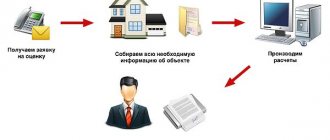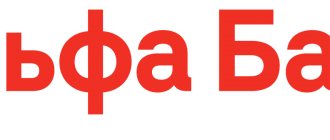What is a receipt and why is it needed?
A promissory note is created in cases where one person transfers a certain amount of money to another. A prerequisite for this is the return of funds within the agreed time frame.
Most lenders (persons transferring funds) are confident that drawing up a receipt guarantees payment of the debt, but in practice it often turns out differently. An incorrectly drawn up document will not help in a situation where the debtor refuses to return the money.
Dear readers! The article talks about typical ways to resolve legal issues, but each case is individual. If you want to find out how to solve your particular problem , contact a consultant:
+7 (499) 938-81-90 (Moscow)
+7 (812) 467-32-77 (Saint Petersburg)
8 (800) 301-79-36 (Regions)
APPLICATIONS AND CALLS ARE ACCEPTED 24/7 and 7 days a week.
It's fast and FREE !
In a situation where a large amount is transferred, they usually turn to a lawyer and a notary to draw up a full-fledged loan agreement.
When it comes to smaller loans, individuals limit themselves to drawing up a receipt confirming that the borrower has received the money.
The Civil Code, and specifically Article 808, states that a loan agreement between individuals is drawn up in cases where the transferred amount exceeds the minimum wage by 10 (or more) times.
At the same time, the law on the minimum wage establishes one more rule: if civil obligations are calculated depending on the minimum wage, the amount of 100 rubles is taken as the basis. It turns out that a loan agreement can be drawn up when transferring a loan of 1000 rubles or more.
The second part of Article 808 of the Civil Code states that a receipt can be drawn up to confirm a loan agreement. Drawing up a receipt confirms the fact of transfer of funds or things.
It turns out that a receipt can be a document proving the existence of a civil law relationship between two individuals, but it is not always possible to return money using a receipt alone.
Can a receipt protect against non-payment of debt?
A receipt for a loan of money between individuals is not always a guarantee of repayment of the debt. The document will not be able to help if it was drafted incorrectly.
Below are a few examples of improperly drafted promissory notes:
- The document is limited to indicating only the full name of the borrower; passport data is not indicated. Example:
“I, Konstantin Petrovich Ivanov, give a receipt that I received a loan from Pyotr Ivanovich Konstantinov in the amount of 10,000 rubles.”
With such a receipt, it is very difficult to prove that Konstantin Petrovich Ivanov is the same person who borrowed money from P.I. Konstantinov. To confirm the document, a whole range of measures will be required, including a handwriting examination.
- Some receipts do not contain information about the lender. Example:
“I, Petr Konstantinovich Ivanov, born 02/05/1967, passport series 1234 number 567890, issued by the department of the Federal Migration Service of Russia for the XXXXXXX district of the city YYYYYYY, date of issue 05/01/2012, registered at the address YYYYYYY, st. xxxx, 11, apt. 14, I give a receipt that I received a loan on 02/01/2014 in the amount of 10,000 rubles with a repayment period of 05/02/2014.”
Since a loan receipt between individuals is a confirmation of the loan agreement, the borrower can submit to the court a completely different agreement, which will contain all the same information, but one of his friends or relatives will be indicated as the lender. In this case, the borrower may claim that he has lost the receipt for the provided agreement and attract several false witnesses.
- Another version of an incorrectly drawn up receipt looks like this:
“I, Petr Konstantinovich Ivanov, date of birth, passport details, registration address, give this receipt that on 01/01/2014 I agreed with Ivan Petrovich Konstantinov, date of birth, passport details, registration address, to borrow an amount of 40,000 rubles "
The difficulty for the lender is that the receipt states the loan agreement, but does not say anything about the transfer of money. That is, an unscrupulous borrower may claim that he did not receive any funds.
The Civil Code has Article 812, according to which a loan agreement can be challenged. If the borrower proves that he did not receive the money, and the court accepts this position, the lender’s demands for repayment of the debt will not be satisfied.
- The receipt may not indicate the purpose of the transfer of money, nor does it indicate the return period. Example:
“I, Konstantin Petrovich Ivanov, date of birth, passport details, registration address, received on 01/01/2014 from Ivan Konstantinovich Petrov, date of birth, passport details, registration address, the amount of 2000 rubles.”
In the future, the borrower can safely claim that he received the specified money not as a loan, but just like that - as a gift, for example. If the lender does not provide any evidence, he is unlikely to be able to return the money.
- The loan receipt between individuals does not contain information about the period for repayment of the debt, and additional conditions are not indicated. For example, a lender may lend money and then receive a larger amount from the borrower. In this case, this must be stated or indicated at what interest the loan was issued.
According to the current legislation (Article 809 of the Civil Code of the Russian Federation), a loan is recognized as interest-free when the loan is transferred in an amount not exceeding 50 times the minimum wage.
- Sometimes money is lent for specific purposes. Such loans are called “targeted”. If the receipt does not say anything about the purpose of receiving the funds, you cannot demand early repayment of the debt when the borrower uses the funds for other purposes.
- If the receipt does not contain information regarding the timing of repayment, the borrower is obliged to return the money within 30 days from the date of presentation of such a demand by the lender (the norm is enshrined in Article 810 of the Civil Code of the Russian Federation).
- Quite often difficulties arise with receipts printed on a computer. If the case goes to court, the borrower may begin to claim that his signature was forged. In this case, it is impossible to do without an examination to determine whether the handwriting matches.
If the borrower’s signature resembles more of a “squiggle”, the expert may write in the conclusion that it is not possible to establish the degree of authenticity of the signature.
- It is not allowed to have any deletions or corrections in the loan receipt between individuals, especially if they relate to the amount, terms, etc. All this casts doubt on the reliability of such corrections.
Repayment of a loan to an individual from a legal entity occurs in the ways described in the article: return of a loan to an individual. Read the interest-free loan agreement between an individual and an individual entrepreneur here.
In what cases can a pawnshop sell collateral?
The pawnshop has the right to foreclose on the collateral as a result of the borrower’s failure to repay the debt, but this does not mean that it will be exercised the next day after the delay.
According to
Federal Law “On Pawnshops” dated July 19, 2007 N 196-FZ, foreclosure on the pledge can be made no earlier than a month after the delay occurs. In this case, the countdown begins from the day following the return deadline. Such a mechanism is called a grace period and guarantees the borrower time during which he does not have to worry about the sale of the collateral.
After a month, the collateral is considered unclaimed and may be subject to sale, but do not forget that the borrower has the right to stop this process, as mentioned above.
The sale of property by a pawnshop occurs in an indisputable manner, the basis for which is a notarial writ of execution. However, this is not the only collection mechanism; the law also allows collection without involving a notary if this is reflected in the client’s agreement with the pawnshop.
IMPORTANT: The borrower has the right to claim the difference received by the pawnshop from the sale of property within three years from the date of sale in the event that the amount received by the pawnshop exceeds its obligations.
Sample form for a loan receipt between individuals
To avoid any difficulties in receiving the borrowed amount, the receipt must be written manually. At the same time, corrections and strikethroughs should not be allowed in the document.
A receipt for a loan of money between individuals must contain the following information:
- full information about the borrower and lender (full name, date of birth, place of birth, full passport data indicating the date of issue of passports, registration address);
- a note that the borrower receives funds as a loan, and not as payment for a product or service;
- all the conditions under which the funds are issued (interest-bearing or interest-free loan, debt repayment period, goals, etc.). You can view a sample receipt form here
With interest
If the lender lends money at a certain interest rate, this must be indicated in the receipt. The lender can demand from the borrower exactly as much interest as specified in the loan agreement.
If the agreement does not specify the amount of interest, but money in the amount of more than 50 minimum wages was lent, the law provides for the accrual of interest at the refinancing rate.
An important point: interest can be accrued under the agreement for amounts over 5,000 rubles. The rule established by the law on the minimum wage applies here: if civil obligations are calculated depending on the minimum wage, the amount of 100 rubles is taken as the basis. Based on this, the amount comes out to 5,000 rubles.
If the borrower is an individual entrepreneur, and the money was borrowed specifically for commercial activities, the agreement becomes “interest-bearing”, regardless of the amount borrowed.
The loan amount established in accordance with such an agreement can be repaid ahead of schedule only with the consent of the lender.
No interest
The agreement automatically becomes interest-free if it is drawn up between individuals for an amount not exceeding 50 times the minimum wage. Also, an agreement is considered interest-free if it transfers not money, but things. The borrower can repay the money borrowed under an interest-free agreement ahead of schedule.
Secured by real estate
The lender may require the mortgage of real estate as security measures. This condition must be specified in the loan agreement.
Typically, such documents are certified by a notary office. A loan agreement secured by real estate requires proper drafting, so for these purposes it is advisable to contact an experienced lawyer.
You can view a sample of such an agreement here.
Pledge ticket
A pledge ticket is the main document that defines clear conditions for the pledge and redemption of property. And also, as already mentioned, this is the main documentary confirmation for the client that he turned to the pawnshop, and did not “get caught in the net” of a thrift store.
It is worth noting that returning property without a ticket is impossible, and in case of loss, the careless borrower will have to apply for its restoration to the director of the organization. Despite the “threatening” sound, there is no need to be afraid of such a development of events; copies of pledge tickets are kept in the registers.
The form of the deposit ticket is determined by law and is regulated by the order of the Ministry of Finance of the Russian Federation “On approval of forms and forms of strict reporting” No. 8 dated January 14, 2008. According to the normative act, the document must reflect such data as:
Pawnshop name;- Contact details of the organization;
- Complete client data;
- The name of the pledged property with its full description, including defects and distinctive features;
- The estimated value of the collateral determined by the employee;
- Loan amount;
- The date the loan was issued, as well as its repayment period;
- Interest rate;
- Early repayment procedure;
- Notifying the client about the possibility of selling property in the event of failure to fulfill obligations.
In addition, the pledge ticket necessarily reflects the borrower’s right to the opportunity to repurchase the property at any time until it is sold. That is, even in the event of a significant delay, the debtor can stop the sale of property by fulfilling his obligations, paying not only the loan itself, but also accrued fines and interest.
Basic rules for drawing up a receipt
In general, there are several basic rules for drawing up a loan receipt between individuals. If all of the above conditions are met, you can be sure that the money will be returned, even if this requires a trial.
So, the basic rules for drawing up a receipt:
- always draw up a receipt manually, do not type its text on a computer;
- always indicate the last name, first name and patronymic in full (both yours and the borrower’s);
- accurately enter dates of birth, passport details and registration addresses;
- The one who borrows the money must write a receipt! Otherwise, the borrower may claim that he did not draw up the document;
- all paintings must come with a transcript (full full name following the painting);
- the contract amount must be written in numbers and in words, indicating the currency. This will protect against possible manipulations with the amount and eliminate controversial issues;
- do not forget to indicate the terms of refund in the receipt;
- if a large sum is involved, involve witnesses if possible. Indicate their full name and passport details. This reduces the risk of situations in which the reliability of the document is called into question;
- If you borrow money at interest, indicate the amount of this interest on the receipt.
Thus, following a few simple rules will eliminate possible problems for both the lender and the borrower. The main thing is to decide in advance on what conditions the loan is issued and indicate these conditions in the receipt.
Always double-check the receipt for errors, and if you find any, draw up a new document.
How to get an online loan from the age of 18 is described in the article: loans from the age of 18. Download the form for an interest-free loan agreement between individuals here.
Details about the targeted loan agreement between an individual and a legal entity can be found on the page.



![Mortgage for civil servants and other public sector employees in Sberbank in [year]](https://2440453.ru/wp-content/uploads/ipoteka-dlya-gossluzhashchih-i-drugih-byudzhetnikov-v-sberbanke-v-year4-330x140.jpg)

![How to return DomClick mortgage insurance from Sberbank in [year]](https://2440453.ru/wp-content/uploads/kak-vernut-strahovku-po-ipoteke-domklik-ot-sberbanka-v-year-330x140.jpg)




